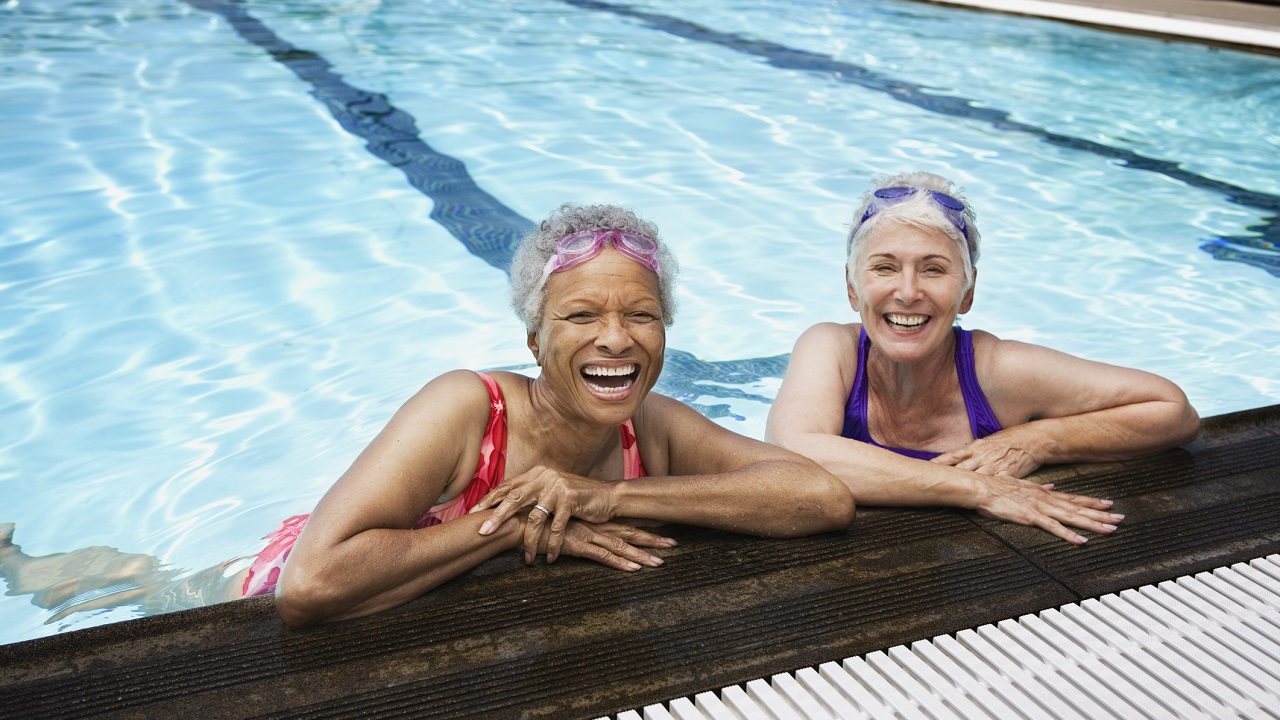The Centers for Disease Control and Prevention (CDC) estimates that 23 percent of all adults—over 54 million people—have arthritis. Physical activity is important for seniors, but even mild exercise can feel impossible due to stiff, painful joints.
With countless research studies touting the benefits of exercise for the elderly, can aging loved ones really afford to forgo their daily cardio?
Experts don’t think so.
Neil Roth, M.D., an orthopedic surgeon and sports medicine specialist at the New York Sports Medicine Institute, says “there is nothing better” than exercise when it comes to managing arthritis pain. Although he does admit that it can be hard for people who are in pain to stick to an exercise routine.
“It is a catch 22, because arthritis pain can prevent a person from exercising, but it is actually one of the most beneficial ways to alleviate arthritis pain,” Dr. Roth explains.
Thankfully, there are ways to make an exercise regimen more arthritis-friendly.
How to Exercise With Arthritis
Prioritize Pain Management
According to Stephen Soloway, M.D., a rheumatologist, the key to a successful exercise program for people with arthritis is making sure their pain is under control before they start working out. This will likely involve a trip to the doctor to diagnose the type of arthritis a senior has and a prescription for any necessary anti-inflammatory medications or therapies. Once joint pain and inflammation are under control, Dr. Soloway says a senior should be able to do most types of exercise without aggravating their condition. A doctor can also recommend specific kinds of exercises for people with arthritis and caution against activities that could be harmful.Start Slow
Warming up is an often overlooked yet integral element of a workout—especially when a senior’s joints are sore and stiff due to their arthritis. Before hopping on a bike or picking up dumbbells, perform some gentle range-of-motion exercises (ideally ones prescribed by a doctor or physical therapist). Warm up exercises for seniors with arthritis typically include movements like arm circles, hip lifts and toe touches. Dr. Roth says it might also be beneficial for a senior to put a heat pack on their most painful areas prior to starting a workout. Gentle heat can help relax and loosen up muscles and joints.Reduce Your Impact
Dr. Roth recommends low-impact exercise for arthritis sufferers. He cites swimming, water aerobics, stationary cycling and elliptical machines as great forms of cardiovascular training that are easy on the joints.
Dr. Soloway also suggests practicing Tai Chi to help a senior improve their balance and flexibility. Research has shown that this ancient Chinese martial art can help reduce pain and increase mobility in people with different types of arthritis. One study found that practicing Tai Chi yielded similar results in terms of pain reduction and improvements in physical functioning compared to participating in a traditional physical therapy regimen for osteoarthritis of the knees. As an added benefit, participants in the Tai Chi group “showed more improvement in their depression symptoms and quality of life than those in the physical therapy group.”
Weight training is another low-impact exercise option. It’s generally safe for an individual with arthritis to lift light weights, just be sure to check with a doctor before beginning a new weight training program.Mix It Up
Switching up an exercise regimen can be extremely beneficial for a senior who is suffering from arthritis, notes Dr. Soloway. “Workouts should be varied not stagnant,” he says. There are numerous benefits of mixing it up in the gym, not the least of which is that you’re less likely to become bored and uninterested in working out. Dr. Soloway urges seniors with arthritis to consult with a doctor to come up with a personalized workout plan. A physician can develop a physical fitness program that focuses on safely developing cardiovascular capacity as well as all-around strength and flexibility.Pain Doesn’t Always Equal Gain
Both Dr. Roth and Dr. Soloway warn individuals with arthritis to avoid workouts that cause them pain. “You should exercise up to a point where you are tired, but it is not good to push through pain,” Dr. Roth emphasizes. The old adage of “no pain, no gain” doesn’t apply here. Dr. Soloway adds that pain is your body’s way of telling you that something is wrong. It is especially important for older adults with rheumatoid arthritis to go to the doctor to make sure their inflammation is under control before starting an exercise program.Work on Weaknesses
When it comes to strength training, a senior might want to stick with the exercises that they’re good at. However, Dr. Soloway points out that it’s equally (if not more) important to target weaker muscle groups. According to Dr. Roth, some of the most beneficial exercises a senior can do are those that strengthen the muscles that support their arthritic joints. A doctor or physical therapist can design a set of exercises geared towards strengthening the areas around pain points.Recover Well
Dr. Roth encourages seniors with arthritis to prioritize a smooth recovery before, during and after working out. For example, light stretching before and after exercising can help a senior’s muscles recover more quickly. If certain areas are particularly sore, it may be beneficial to ice them. When icing, make sure the ice pack is wrapped in a thin towel and don’t leave it on the skin for longer than 30 minutes.Don’t Forget to Eat Right
There’s no magical diet that can take away aches and pains, but eating a healthy, nutritious diet can do wonders for seniors who have arthritis. Dr. Soloway suggests tailoring one’s diet to one’s exercise regimen. For example, if a senior is engaging in a good amount of strength-training exercises to build up the muscles around their joints, they’ll need plenty of lean protein like eggs, almonds, chicken and salmon to help fuel muscle growth. If they’re doing a good amount of cardio, high-quality carbohydrates, such as fruit, whole grain pasta and bread, and brown rice, are a must.
